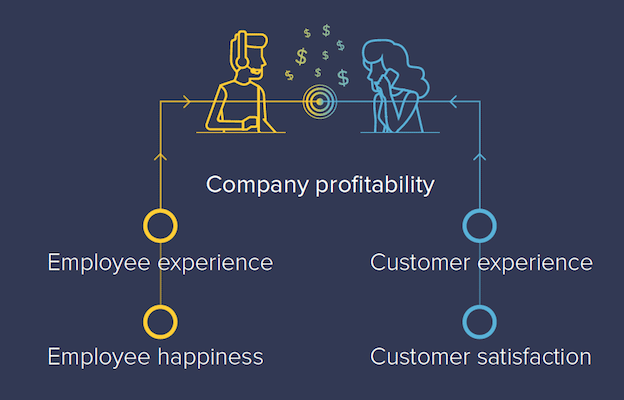
Here’s a situation most people will find familiar: You buy a product, and when it finally arrives, there’s something wrong with it—for instance, it was damaged in shipping or doesn’t operate as advertised. Mildly frustrated, you open the company’s mobile app to send a message but discover no such messaging capabilities exist. So then, you reach out through Facebook, but nobody answers. Finally, you bite the bullet and try to find the company’s service phone number on their website. Ten minutes after searching, you find it and call in.
Once you get an actual human being on the other side of the phone—which happens after navigating numerous automated menus—their first response is to put you on hold. Then, someone else comes on the line, a specialist, who asks you to recount your story again before transferring you to a third person, the right specialist, who asks you to start all over again. There is no guarantee this will be the last person you talk to who can finally help resolve your issue. It’s safe to say that by now, your initial mild frustration has turned more severe, and you may very well consider taking your business elsewhere.
Dealing with customer service is often an exercise in frustration. It is easy to blame customer-facing employees for communication breakdowns or companies for poor service agent training, but the reality is more complex, according to a global study we commissioned with CITE Research.
After surveying 2,000 frontline employees across the US, UK, and Australia, we found that employees are equally frustrated with disjointed communications technologies that prevent them from providing great customer experiences. The findings also uncovered a powerful connection between employee and customer experiences: Engaging employees with a seamless communications platform increases their productivity and helps delight customers, ultimately benefiting the company bottom line.
The customer expectation gap
Today’s rapid expansion of digital channels has given customers higher expectations for service than ever before, as well as more opportunity to be delighted or disappointed in every interaction with a company. One particular challenge for companies is being responsive to customers in real time and through the channels of their choice.
If communication and service expectations aren’t met, businesses face serious repercussions. The new research shows that customers stopped doing business with brands an average of four times in the past year after a bad customer service experience.
Disjointed communications technologies create a vicious cycle
The study highlights that customer-facing employees continue to struggle with the communications technologies at their disposal, which is a major factor in the gap between customer expectations and service reality.
We found that communications technologies are deficient in two primary ways. First, outdated technologies prevent customers from communicating with companies via their preferred mode. Second, they don’t enable employees to easily collaborate with coworkers for help in resolving customer issues.
These fundamental challenges impact employee productivity and happiness, and result in poor customer satisfaction.
- Seventy-four percent of customer-facing employees constantly toggle between apps when trying to address customer queries. This incessant cycling of apps is not conducive to providing a great customer experience and wastes up to 60 minutes each day, according to an earlier RingCentral study.
- Workplace happiness decreases for 75% of employees when communications technologies hinder productivity, and 88% agreed that disjointed tech hurts workflows and diminishes job satisfaction.
- Seventy-four percent of employees believe that they can’t effectively serve customers if they can’t collaborate with coworkers, and 89% agree that broken workflows and low employee job satisfaction harm both customer satisfaction and the company bottom line.
A seamless communications platform enables friction-free workflows
It’s time for CIOs and leaders from customer support and lines of business to acknowledge that employee engagement and customer satisfaction are intrinsically connected. They need to embrace an integrated communications and collaboration platform that delivers a unified workflow and allows customers to connect with companies through the channels of their choice, while giving employees a seamless communications experience in how they respond to customers and collaborate with coworkers.
In the report, customer-facing employees overwhelmingly expressed the need for such a solution. Over 90% of respondents believe that an integrated communications platform would make both employees and customers happier and improve customer satisfaction scores. Eighty-six percent believe that this would increase company profitability.

To learn more about the employee and customer engagement equation, read the infographic and eBook.
Originally published Feb 26, 2019, updated Dec 30, 2022




